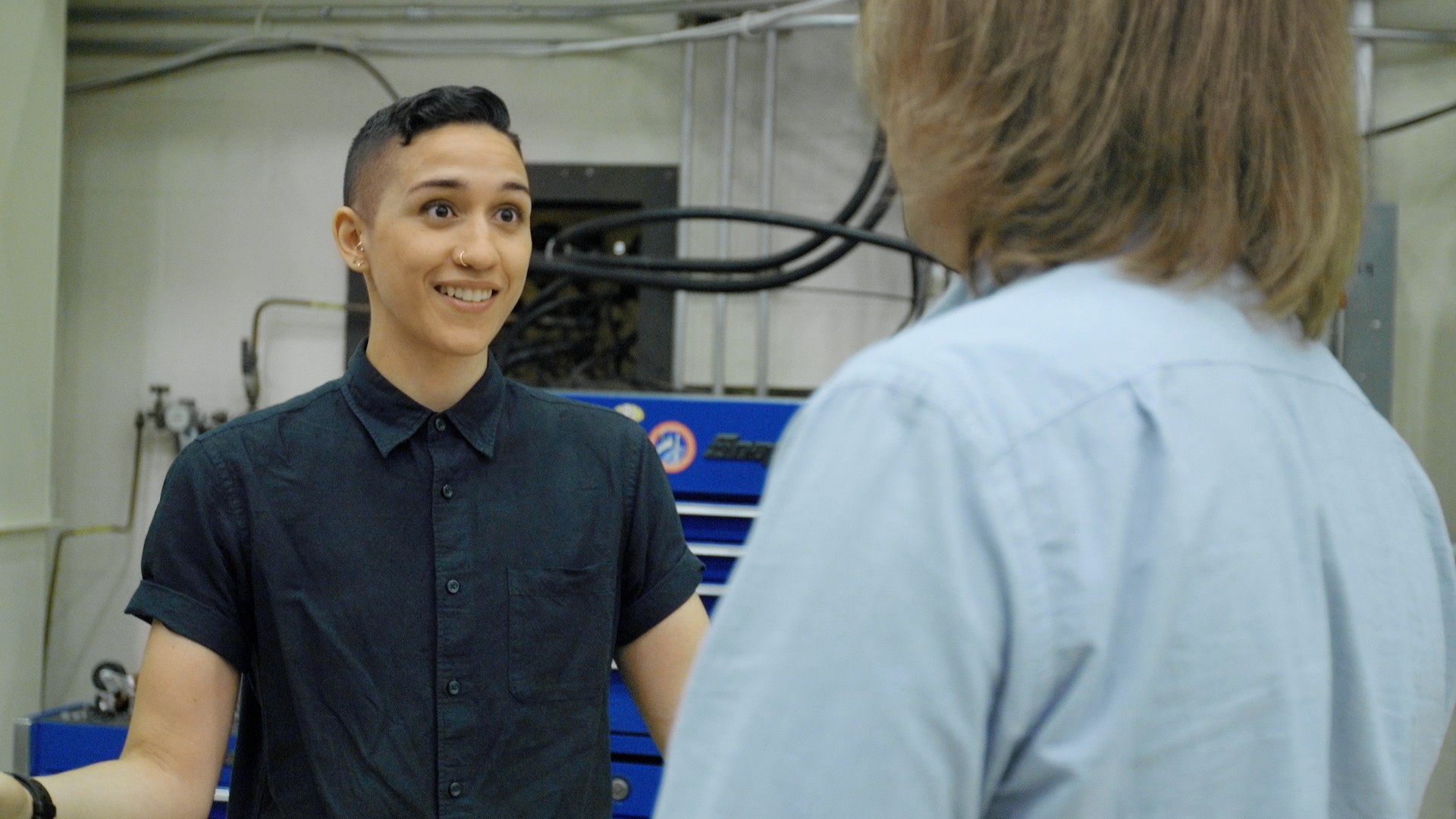Image: David Peterson
For years, Naval Research Laboratory meteorologist David Peterson has been obsessed with one of Earth’s rarest atmospheric spectacles: thunderclouds formed by raging wildfires. Last week, he became one of the only people on Earth to fly straight through one.Peterson is the lead forecaster for Fire Influence on Regional to Global Environments and Air Quality (FIREX-AQ), a joint NASA and NOAA-led field campaign that’s spending the summer intensively studying wildfire smoke from the ground, the air, and satellites. On August 8, he rode shotgun as NASA’s DC-8 research aircraft passed directly through an anvil cloud as it was developing over the 45,000-acre Williams Flats fire currently burning in the Pacific Northwest.Over the next few hours, the plane would conduct the most detailed reconnaissance ever from within a pyrotechnic weather system, making observations and collecting samples that will help researchers to better understand the nature of these dramatic events and how they can impact Earth’s climate.“Just being there was the most amazing experience I’ve ever had while working in science,” Peterson said.Pyrocumulonimbus clouds (pyroCbs) only form when conditions are just right—you need a special combination of atmospheric instability, moisture, and loads of wildfire heat to create an updraft. But once a pyroCb cloud is in place, it can act like a chimney, funneling smoke into the stratosphere. From there, smoke can spread around the planet, a bit like the ash from a volcanic eruption.But while scientists have a pretty good idea of what volcanoes send up into the stratosphere and how those particles can cool the planet, we know very little about the chemistry of pyroCbs, limiting our knowledge of what they can do to the atmosphere and the climate. Flying through one can offer a wealth of information that satellites are unable to collect, which is why Peterson and his colleagues have been on the lookout for the right conditions ever since the FIREX-AQ campaign started up in late July.So far, FIREX-AQ has sampled fires of all types—big ones and small ones; smoldering fires and flaming fires; grass, brush, and forest fires. According to Barry Lefer, a NASA atmospheric scientist and program manager for FIREX-AQ, while a pyroCb was on the team’s list, he thought they had a “less than 50-50” chance of actually sampling one.Early last week, the team realized their chance was approaching.“By following weather conditions day to day, we were able to pinpoint three days out that Thursday the 8th was going to be the day,” Peterson said. The site of the impending cloud formation would be the Williams Flat fire, a large brush fire in eastern Washington state.On the afternoon of the 8th, NASA’s DC-8 airborne science laboratory took off from FIREX-AQ’s base of operations in Boise, Idaho. The initial goal was to sample smoke from the Williams Flat fire that had drifted downwind over Montana.While Peterson was in the air, a team on the ground— comprised of Naval Research Laboratory postdoctoral researcher Philippe Papin, University of Iowa graduate student Tyler Van, and several summer interns—conducted real-time analysis of satellite and weather data to spot any pyroCbs. NASA’s high-flying ER-2 aircraft had also flown directly over the blaze earlier in the day, mapping out hotspots within the fire that told the team where to focus their attention. Once the team was sure a pyroCb event had begun, they diverted the DC-8 to the west to intercept the cloud. Coming over the fire at an altitude of about 30,000 feet, the first thing Peterson saw was a smoke layer streaming downwind of the fire cloud. Eventually, the plane reached the pyroCb itself.“We knew what to look for based on the literature and studies we’ve been a part of,” Peterson said. “It was very nice to see that it actually appeared the way we expected.”The plane spent about three hours in the area, collecting samples from both the pyroCb thundercloud and the downwind smoke. “It’s far and away the most detailed sampling and very likely the first chemistry-composition sampling of a pryoCB,” Peterson said. “Just putting the NASA DC-8 in that environment gives you a wealth of data.”It’ll be a little while before that data is fully analyzed. FIREX-AQ has another few days of flights out of Boise before the team heads south to Salina, Kansas, where they’ll spend another two-and-a-half weeks studying smoke from agricultural fires in the southeastern U.S. Less well-studied than wildfires, agricultural fires can also have a huge impact on air quality so it’s important to understand the chemistry and behavior of their smoke, according to Lefer.Peterson is excited to see what the data reveals about chemical evolution of gases within pyroCb clouds, something he said is very poorly understood. He’s also looking forward to learning more about the aerosol particles, he said, including how much of the smoke is comprised of charred material known as black carbon. Knowing the fraction of black carbon in a plume is important for understanding its behavior in the stratosphere, as a recent study demonstrated. And the DC-8 also collected some rare data on pyroCb cloud properties, including the characteristics of the ice particles inside of them.“I think I’m excited for all of it,” Peterson said.
Once the team was sure a pyroCb event had begun, they diverted the DC-8 to the west to intercept the cloud. Coming over the fire at an altitude of about 30,000 feet, the first thing Peterson saw was a smoke layer streaming downwind of the fire cloud. Eventually, the plane reached the pyroCb itself.“We knew what to look for based on the literature and studies we’ve been a part of,” Peterson said. “It was very nice to see that it actually appeared the way we expected.”The plane spent about three hours in the area, collecting samples from both the pyroCb thundercloud and the downwind smoke. “It’s far and away the most detailed sampling and very likely the first chemistry-composition sampling of a pryoCB,” Peterson said. “Just putting the NASA DC-8 in that environment gives you a wealth of data.”It’ll be a little while before that data is fully analyzed. FIREX-AQ has another few days of flights out of Boise before the team heads south to Salina, Kansas, where they’ll spend another two-and-a-half weeks studying smoke from agricultural fires in the southeastern U.S. Less well-studied than wildfires, agricultural fires can also have a huge impact on air quality so it’s important to understand the chemistry and behavior of their smoke, according to Lefer.Peterson is excited to see what the data reveals about chemical evolution of gases within pyroCb clouds, something he said is very poorly understood. He’s also looking forward to learning more about the aerosol particles, he said, including how much of the smoke is comprised of charred material known as black carbon. Knowing the fraction of black carbon in a plume is important for understanding its behavior in the stratosphere, as a recent study demonstrated. And the DC-8 also collected some rare data on pyroCb cloud properties, including the characteristics of the ice particles inside of them.“I think I’m excited for all of it,” Peterson said.
Advertisement
Advertisement

